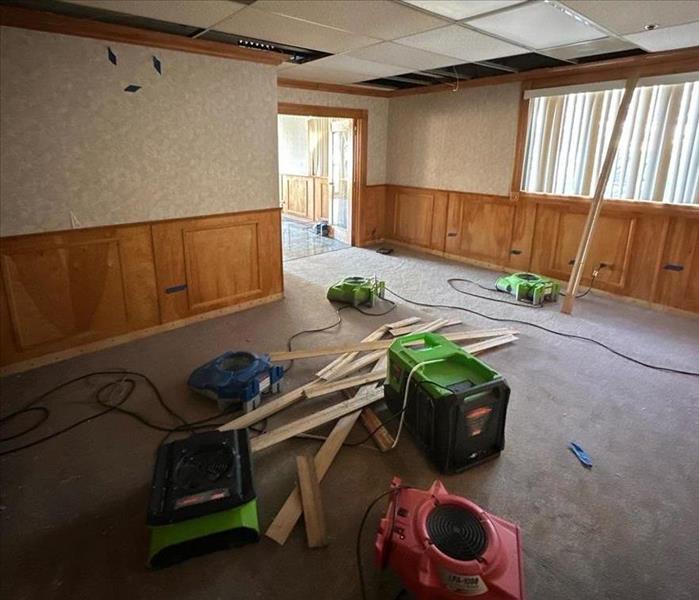DIY Mold Removal: When to Call the Professionals
3/13/2024 (Permalink)
 It's important to understand when it's appropriate to handle the job yourself and when it's time to call in the professionals.
It's important to understand when it's appropriate to handle the job yourself and when it's time to call in the professionals.
Discovering mold damage in your home can be alarming, but before you dive into a DIY mold removal project, it's important to understand when it's appropriate to handle the job yourself and when it's time to call in the professionals. In this article, we will explore the signs of mold damage, outline the steps involved in DIY mold removal, and discuss situations where professional assistance is necessary.
Signs of Mold Damage
Identifying the signs of mold damage is crucial in determining whether you should address the issue yourself or seek professional help. Look out for the following indicators:
- Visible Mold Growth: If you spot mold growth on surfaces such as walls, ceilings, or floors, it may suggest a more extensive problem. Large areas of mold growth often require professional attention.
- Musty Odor: A musty smell in specific areas of your home can indicate hidden mold growth. Investigate further to determine the source and extent of the issue.
- Water Damage: Any previous water damage, such as flooding, leaks, or high humidity, can promote mold growth. If there are signs of water damage, it's recommended to consult professionals for a comprehensive assessment.
Steps in DIY Mold Removal
If you decide to tackle minor mold damage yourself, it's important to follow the necessary steps to ensure your safety and effectiveness. Here's a general guide for DIY mold removal:
- Personal Protective Equipment (PPE): Before starting any mold removal process, don the appropriate PPE, including gloves, goggles, and a respirator to protect yourself from mold spores.
- Contain the Area: Use plastic sheeting and tape to create a barrier around the affected area. This will prevent the spread of mold spores to other parts of your home.
- Remove Mold-Impacted Materials: Carefully remove and dispose of any materials (such as drywall or carpet) that are heavily infested with mold. Double-bag and seal the materials to prevent contamination.
- Clean Surfaces: Use a mold-specific cleaner or a mixture of water and detergent to scrub the mold off hard surfaces. Thoroughly dry the area afterward to discourage further mold growth.
- Ensure Proper Ventilation: Open windows and use fans to improve airflow during and after the cleaning process. This will help dry out the area and minimize the risk of mold regrowth.
When to Call the Professionals
While DIY mold removal can be suitable for small-scale, easily accessible areas of mold, certain situations call for professional assistance. It's recommended to contact mold remediation professionals when:
- Extensive Mold Growth: If the mold covers an area greater than 10 square feet, it's best to have certified professionals handle the removal process. They have the expertise and equipment to safely address larger-scale mold problems.
- Hidden or Hard-to-Reach Mold: Mold growth in hidden spaces like behind walls or under flooring requires specialized techniques for proper detection and removal. Professionals have the necessary tools and knowledge to access these areas.
- Recurring Mold: If you have previously attempted DIY mold removal but the mold keeps coming back, it indicates a deeper issue that professionals can thoroughly assess and address.
DIY vs. Professional Mold Remediation
Knowing when to handle mold damage yourself and when to call in professionals is crucial for effective and safe remediation. While minor mold issues can be handled with DIY methods, extensive growth, hidden mold, or recurring problems necessitate the expertise of certified professionals. SERVPRO® technicians are trained in mold removal and remediation, available to address any size mold problem in your home. Contact us today to schedule a consultation and ensure a thorough and successful mold removal or remediation process.





 24/7 Emergency Service
24/7 Emergency Service